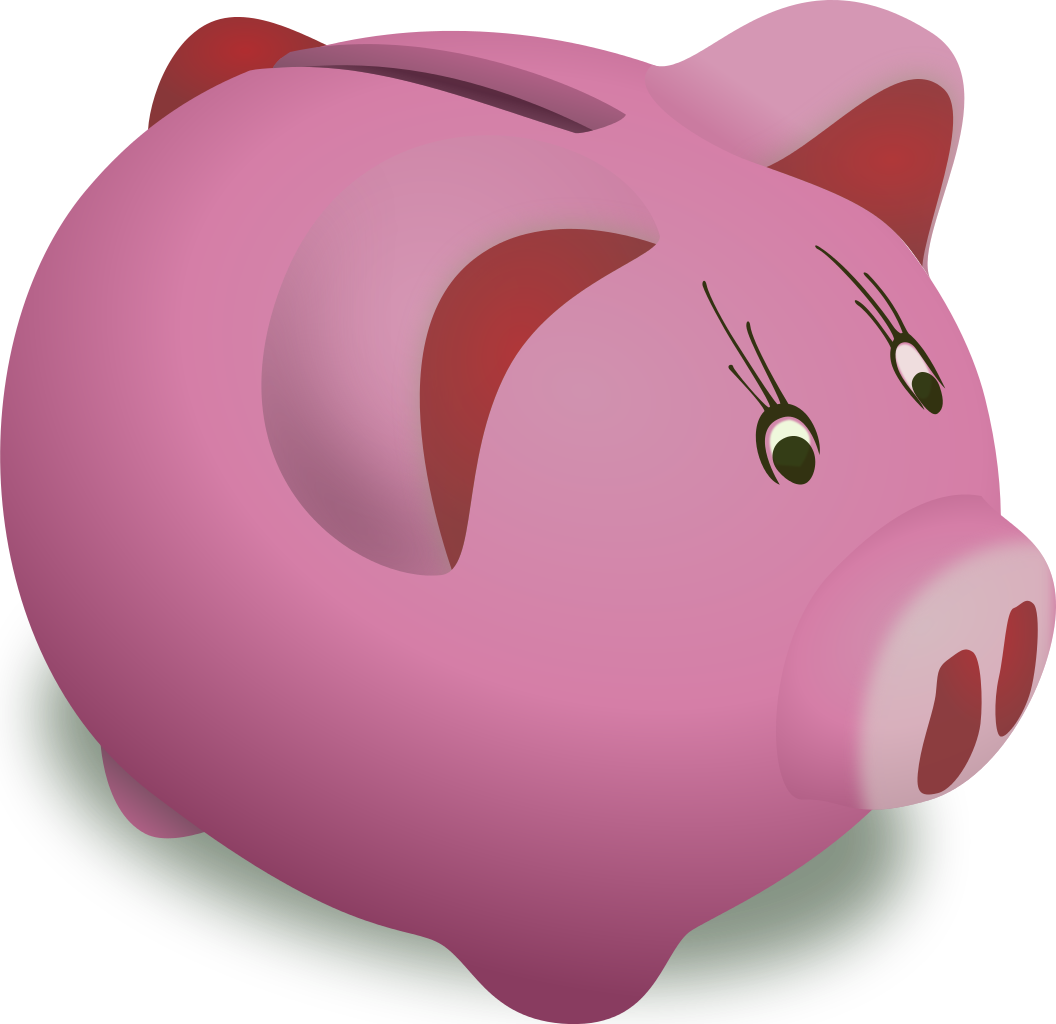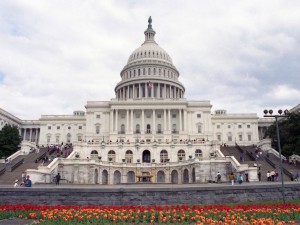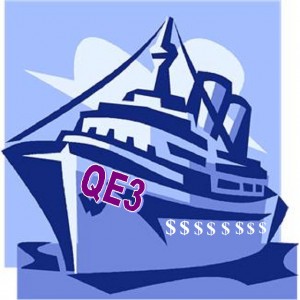 As we saw in the blog post Down down deeper and down, or a new Status Quo?, for many countries there is now a negative rate of interest on bank deposits in the central bank. In other words, banks are being charged to keep liquidity in central banks. Indeed, in some countries the central bank even provides liquidity to banks at negative rates. In other words, banks are paid to borrow!
As we saw in the blog post Down down deeper and down, or a new Status Quo?, for many countries there is now a negative rate of interest on bank deposits in the central bank. In other words, banks are being charged to keep liquidity in central banks. Indeed, in some countries the central bank even provides liquidity to banks at negative rates. In other words, banks are paid to borrow!
But, by definition, holding cash (in a safe or under the mattress) pays a zero interest rate. So why would people save in a bank at negative interest rates if they could get a zero rate simply by holding cash? And why would banks not borrow money from the central bank, if borrowing rates are negative, hold it as cash and earn the interest from the central bank?
 These questions are addressed in the article below from The Economist. It argues that to swap reserves for cash is costly to banks and that this cost is likely to exceed the interest they have to pay. In other words, there is not a zero bound to central bank interest rates, either for deposits or for the provision of liquidity; and this reflects rational behaviour.
These questions are addressed in the article below from The Economist. It argues that to swap reserves for cash is costly to banks and that this cost is likely to exceed the interest they have to pay. In other words, there is not a zero bound to central bank interest rates, either for deposits or for the provision of liquidity; and this reflects rational behaviour.
But does the same apply to individuals? Would it not be rational for banks to charge customers to deposit money (a negative interest rate)? Indeed, there is already a form of negative interest rate on many current accounts; i.e. the monthly or annual charge to keep the account open. But would it also make sense for banks to offer negative interest rates on loans? In other words, would it ever make sense for banks to pay people to borrow?
Read the folowing article and then try answering the questions.
Article
Bankers v mattresses The Economist (28/11.15)
Central bank repo rates/base rates
Central banks – summary of current interest rates global-rates.com
Worldwide Central Bank Rates CentralBankRates
Questions
- What is a central bank’s ‘repo rate’. Is it the same as (a) its overnight lending rate; (b) its discount rate?
- Why are the Swedish and Swiss central banks charging negative interest rates when lending money to banks?
- What effect are such negative rates likely to have on (a) banks’ cash holdings; (b) banks’ lending to customers?
- Why are many central banks (including the ECB) charging banks to deposit money with them? Why do banks continue to make such deposits when interest rates are negative?
- Would banks ever lend to customers at negative rates of interest? Explain why or why not.
- Would banks ever offer negative rates of interest on savings accounts? Explain why or why not.
- How do expectations about exchange rate movements affect banks willingness to hold deposits with the central bank?
- What are the arguments for and against abolishing cash altogether?
 The US Federal Reserve bank has launched a third round of quantitative easing, dubbed QE3. The hope is that the resulting growth in money supply will stimulate spending and thereby increase growth and employment.
The US Federal Reserve bank has launched a third round of quantitative easing, dubbed QE3. The hope is that the resulting growth in money supply will stimulate spending and thereby increase growth and employment.
Ben Bernanke, the Fed Chairman, had already said that the stagnation of the labour market is of grave concern because of “the enormous suffering and waste of human talent it entails, but also because persistently high levels of unemployment will wreak structural damage on our economy that could last for many years”. Not, surprisingly, the markets were expecting strong action – and that is what they got.

Under QE3, the Fed will buy mortgage-backed securities of $40bn per month. And this will go on for as long as it takes for the employment market to show significant improvement. It is this open-ended commitment which makes QE3 different from QE1 and QE2. Under these earlier rounds of quantitative easing, the Fed purchased a fixed amount of assets – $2.3tn of bonds.
QE3 also comes on top of a policy in operation since September 2011 of buying long-term government bonds in the market and selling shorter-dated ones. This ‘funding’ operation is known as ‘Operation Twist’.
The markets responded favourably to the announcement of QE3, especially to the fact that its size and duration would depend on the state of the real economy. Nevertheless, there are real questions about its likely effectiveness. The most important is whether the increase in narrow money will translate into an increase in borrowing and spending and hence an increase in broad money; or whether the rise in narrow money will be offset by a fall in the velocity of circulation as banks seek to increase their liquidity ratios and to recapitalise.
The following articles look at the details of QE3 and whether it is likely to achieve its desired result. Will the Fed be forced to raise asset purchases above $40bn per month or to introduce other measures?
Articles
Federal Reserve to buy more debt to boost US economy BBC News (14/9/12)
Bernanke takes plunge with QE3 Financial Times, Robin Harding (14/9/12)
US monetary policy at an important turning point Financial Times, Gavyn Davies (2/9/12)
Cliffhanger The Economist (22/9/12)
Your flexible Fed BBC News, Stephanie Flanders (13/9/12)
Back Ben Bernanke’s QE3 with a clothes peg on your nose The Telegraph, Ambrose Evans-Pritchard (23/9/12)
QE3 Stimulus from Federal Reserve Drives Mortgage Rates Down to Record Lows TellMeNews, Sharon Wagner (24/9/12)
Helicopter Ben Bernanke: The Problem With QE1, QE2, QE3 and QE Infinity TellMeNews, Martin Hutchinson (18/9/12)
QE: More bang than buck Business Spectator, Stephen Grenville (18/9/12)
QE3: What it Really Means PBS NewsHour, Paul Solman (20/9/12)
US Data
US Money Stock Measures Federal Reserve Statistical Release
Data Releases Board of Governors of the Federal Reserve System
Civilian Unemployment Rate (UNRATE) FRED Economic Data
Questions
- What distinguishes the Fed’s QE3 from its QE1 and 2?
- What will determine the likely success of QE3 in stimulating the real economy?
- Why has there been a huge surge in liquidity preference in the USA? What would have been the impact of this without QE1 and QE2?
- Explain what is meant by ‘portfolio balance effects’ and how significant are these in determining the success of quantitative easing?
- Does QE3 suggest that the Fed is pursuing a type of Taylor Rule?
- Why might QE3 be a “pro-cyclical” blunder?
- To what extent would monetarists approve of the Fed’s policies on QE?
- How is QE3 likely to affect the dollar exchange rate and what implications will this have for countries trading with the USA?
 As we saw in the blog post Down down deeper and down, or a new Status Quo?, for many countries there is now a negative rate of interest on bank deposits in the central bank. In other words, banks are being charged to keep liquidity in central banks. Indeed, in some countries the central bank even provides liquidity to banks at negative rates. In other words, banks are paid to borrow!
As we saw in the blog post Down down deeper and down, or a new Status Quo?, for many countries there is now a negative rate of interest on bank deposits in the central bank. In other words, banks are being charged to keep liquidity in central banks. Indeed, in some countries the central bank even provides liquidity to banks at negative rates. In other words, banks are paid to borrow! These questions are addressed in the article below from The Economist. It argues that to swap reserves for cash is costly to banks and that this cost is likely to exceed the interest they have to pay. In other words, there is not a zero bound to central bank interest rates, either for deposits or for the provision of liquidity; and this reflects rational behaviour.
These questions are addressed in the article below from The Economist. It argues that to swap reserves for cash is costly to banks and that this cost is likely to exceed the interest they have to pay. In other words, there is not a zero bound to central bank interest rates, either for deposits or for the provision of liquidity; and this reflects rational behaviour.
